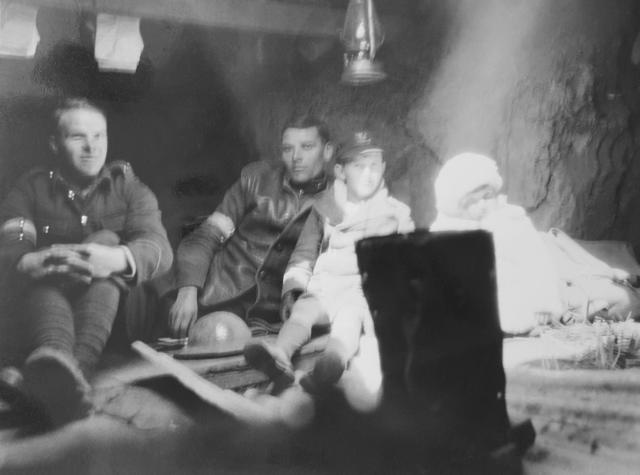Philip Harding Klimanek (1883-1965) was born in the Czech Republic, at the time his place of birth was part of the Austro-Hungarian empire. In ca. 1905 he started to work for Holland-China Trading Company, in Hong Kong.
In 1939, when Charles Gesner van der Voort arrived in Shanghai to work for the company, he was Charles' superior. In a letter home he wrote: "Played chess with Klimanek in the French Club" [translation Pieter Lommerse, the French Club was Le Cercle Sportif Français, a fashionable place to be in the 1930s and it still exists today].
Philip Harding Klimanek was also a juror for the Hong Kong judicial system, which can be found in gwulo.com, for the last time in 1941.
His grandson wrote to me: "Though he had been based in Shanghai before the war we know he was captured in Hongkong on 24th Dec 1941 during the “Battle of Hongkong”. He had been a volunteer with the “isolated Tytan [this should probably be Tai Tam, or Tytam at the time] Godows of the Food Control from November to the end of December 1941” We assume he was involved with food conservation as the Japanese were approaching."
"He was beaten up on capture and needed medical treatment. He was in and out of Stanley camp until the Japanese surrender in 1945. As he was of Austro-Hungarian descent after the war his nationality was hard to determine as his papers and all his possessions had been lost, his health was very poor as a result of how he had been treated during the war. Eventually he managed to get a temporary Czechoslovakian passport in 1948 issued in Nanking China. After a short period in the UK looking for work he returned to the HCTC and was traveling between Shanghai and Hongkong. He retired in Hongkong and returned to England 31st Dec 1950."
Gwulo.com administrator David added a comment about the Tai Tam godown shelters: "I guess he spent that time at Godowns (warehouses) that stored food for emergency use. You can see other examples of this type of godown listed at <a href="https://gwulo.com/hong-kong-shelter-area" rel="noreferrer nofollow">gwulo.com/hong-kong-shelter-area</a>;
Philip Harding Klimanek was a close friend of Willem Kien, another early HCHC-employee, later to become director of the company. Willem Kien's daughter in law recalls seeing him during visits in The Netherlands, together with his wife Zoia and daughter Sylvia. Also Anneke Knüppe-de Jongh, daughter of former HCHC-employee and director Frans de Jongh, has warm memories of the family, which her family stayed closely in touch with.
<a href="https://en.wikipedia.org/wiki/January_28_incident" rel="noreferrer nofollow">en.wikipedia.org/wiki/January_28_incident</a>
"The January 28 incident or Shanghai incident (January 28 – March 3, 1932) was a conflict between the Republic of China and the Empire of Japan. It took place in the Shanghai International Settlement which was under international control. Japanese army officers, defying higher authorities, had provoked anti-Japanese demonstrations in the international District of Shanghai. A Chinese mob attacked Japanese Buddhist priests, killing one. Heavy fighting broke out, and China appealed with no success to the League of Nations. A truce was finally reached on May 5, calling for Japanese military withdrawal, and an end to Chinese boycotts of Japanese products. Internationally, the episode intensified opposition to Japan's aggression in Asia. The episode helped undermine civilian rule in Tokyo; Prime Minister Inukai Tsuyoshi was assassinated on May 15, 1932.
Naming
In Chinese literature it is known as the January 28 incident (simplified Chinese: 一·二八事变; traditional Chinese: 一·二八事變; pinyin: Yī Èrbā Shìbiàn), while in Western sources it is often called the Shanghai War of 1932 or the Shanghai incident. In Japan it is known as the first Shanghai incident, alluding to the second Shanghai incident, which is the Japanese name for the Battle of Shanghai that occurred during the opening stages of the Second Sino-Japanese War in 1937. "
Courtesy Harding-Klimanek family archives
Source: This image came from Flickr, see https://flickr.com/photo.gne?id=50180848227
